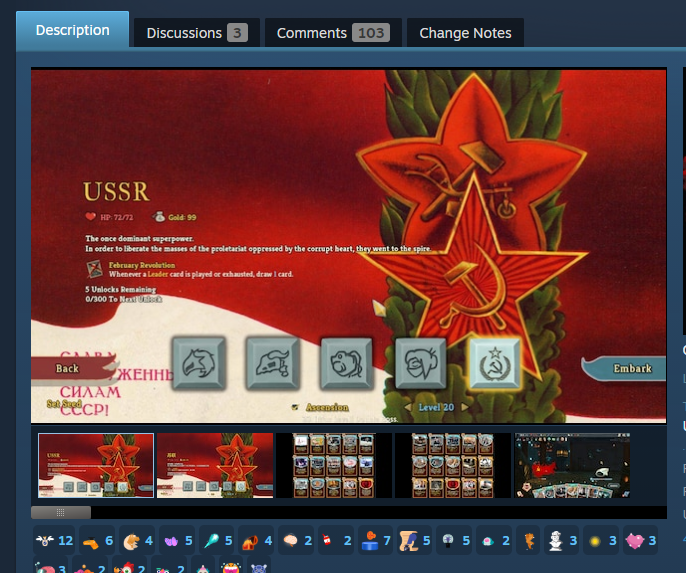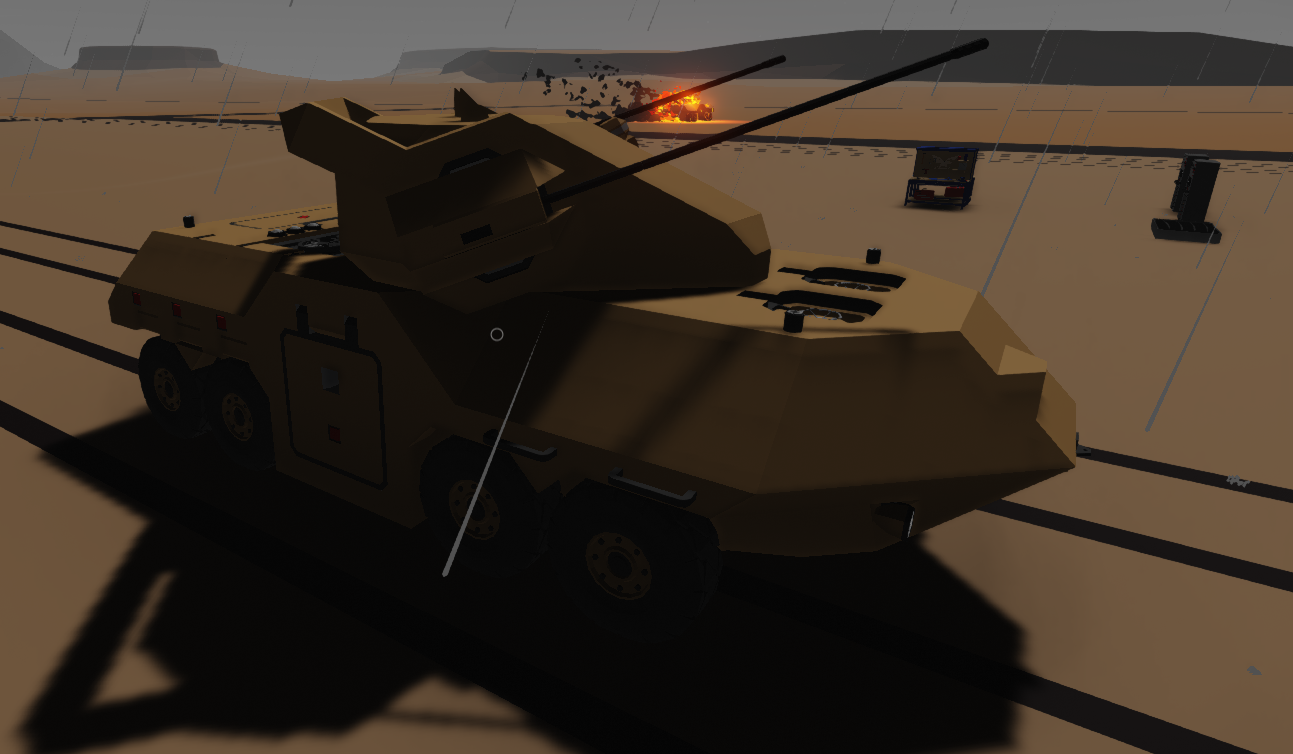(Um, I don't know why your post triggered me into writing this pitch for a wishlist game. Maybe the minecraft with guns bit? idk, I got excited) (repost, as this is enough crap for its on top level post)
I have this pitch for a builder game where you're a military procurement/engineering firm. The LoD would be about what Stormworks has (25cm blocks, or maybe 20 or 10 cm), you spend time fiddling around with air fuel ratios and RADAR etc. You'd be able to fiddle with various war nerd numbers on vehicles you create, but there wouldn't be much for you to do with the vehicles directly. Instead, you teach bots how to use the vehicle (some sort of waypointing system, some vehicle tests like turning, acceleration etc etc). After that, your vehicle and usage data is compiled and a little war goes on in the background. Hypothetically, this war would be happening on another screen or you could refer to it. Because the vehicle is compiled into this RTS mode and not run as a physics simulation (or at least, would be run as a very cut down simulation), that section would be quite light. Possibly multiple layers to examine (strategic, operational, tactical). Your vehicles would have logistical strain (e.g. fuel, maintenance/wear, damage from fire etc). You'd probably want to define a few other variables on how its used (e.g. This is a TANK, GENERAL PURPOSE, SWARM or something). I don't think it would be possible for an AI to account for all ways people would design vehicles and use-cases, but the basic classes are pretty standard nowadays, and people could request things that feel plausible to the dev.
A few reasons for doing it this way:
- Having it so that the vehicle is tested by itself on multiple predictable scenarios means the physics simulation (e.g. denting, beams bending etc) can be more detailed, and allows for more complicated vehicles.
- Once its "compiled" so that the bots can use it, it will run quite light (this is sort of explored in From The Depths, but not to its fullest extent). This couldn't take into account everything possible, but hopefully the bots would use things intelligently (e.g. using cover, grouping tanks, screening etc)
You'd watch combat and take notes on what works well and what does, and work on new designs as the war gets under way. Your new designs that you produce and test would percolate through the logistics system and slowly start appearing on the front.
There'd also be a little thing where you could define your squads that the AI uses in the war (e.g. 12 dudes, 1 command, 2 fireteams, each fireteam has a LAW and 5 assault rifles, command has 1 commander and 2 machine guns etc), with some reference to real world stuff. This would obviously be important for transport vehicles and logistics.
There'd be a mode where you'd have to do it "in real time" (i.e. no pausing for designing), a more freeform creative mode where you can design and save freely without worrying about wars and launch battles with your vehicle instantly, and a thing where you could compile all of your designs into a faction. Presumably, the game would ship with a few real world referenced factions, people could mod in their own ones. And people could also mod in maps that the AI will fight wars on, and opponent factions (of varying degrees of fairness). Tutorial mode, build a truck that carries a squad. It's an electric truck so you don't have to program a gearbox.
It's probably a bit beyond me as a coder (maybe, idk, the primary time I was trying to learn coding was when I had pretty severe depression), but maybe as a fresh godot project if applicable? I think it would absolutely kill amongst a certain sort of war nerd.
Um, comments, I guess. Obviously extremely ambitious on my end, it will probably be another half-started project in my collection :(



I find the act of making the list is helpful for prioritising tasks, but I wind up referring to it very little if at all.
Usually I make it while waiting for food or on public transport